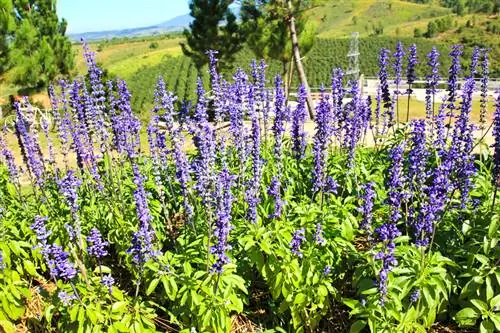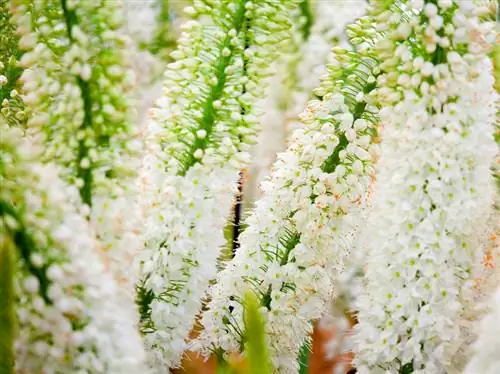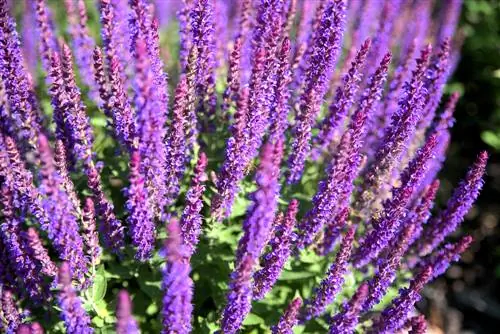- Author admin [email protected].
- Public 2023-12-16 16:46.
- Last modified 2025-01-23 11:20.
With steppe candles (Eremurus) or Cleopatra needles in the garden, it can happen that the hoped-for flowering takes a long time or doesn't appear at all. Therefore, the plant genus Eremurus, which is not particularly demanding in itself, should be offered the best possible location and care conditions.

What care does the steppe candle need?
The steppe candle requires moderate watering, especially in spring and during the flowering period. Transplanting should be done in early autumn. No regular cutting is required. Fertilization in spring with slow-release fertilizer or compost is recommended. Hardy, but protection in a planter is advisable.
How often does the steppe candle have to be watered?
In spring and during the flowering period, the steppe candle should be watered moderately; in extended dry phases, the soil should not dry out too deeply.
When can the steppe candle be transplanted?
The best time for transplanting or propagating the steppe candle is in early autumn, when the rhizomes are in a kind of dormancy. Transplanting in spring can result in the steppe candle not blooming again until a year later.
When and how is the steppe candle cut?
The steppe candle grows new every year from the rhizome and does not need to be cut. The leaves and flowers should only be cut off when they have completely wilted.
Which diseases or pests can be fatal to the steppe candle?
The steppe candle is generally not really affected by diseases, although the following pests can pose a problem in the garden:
- Grubs
- Voles
- Snails
While the snails “only” nibble on the leaves, the voles and grubs underground can cause major damage to the roots. If you notice signs of feeding when transplanting in the fall, you should take long-term countermeasures.
How should the steppe candle be fertilized?
In spring, a slow-release fertilizer (€11.00 on Amazon) or compost should be administered so that the steppe candle has enough energy to form the large flowers. After the flowering period, no more fertilization should be carried out so that the plants can prepare for overwintering.
How is the steppe candle overwintered?
Directly in the perennial bed, the plant is usually hardy without any problems, even in locations with very cold winters. Overwintering in a planter, on the other hand, may require winter protection, as the survival organ (rhizome) is more exposed to the winter cold. Covering the ground with a fleece or spruce brush has proven to be practical, as it also prevents the lanceolate leaves from sprouting too early before the late frosts in spring.
Tip
Make sure that waterlogging does not lead to root rot in the steppe candles, even in winter. To prevent this, the planting hole should be provided with some sand or gravel as a drainage layer.






